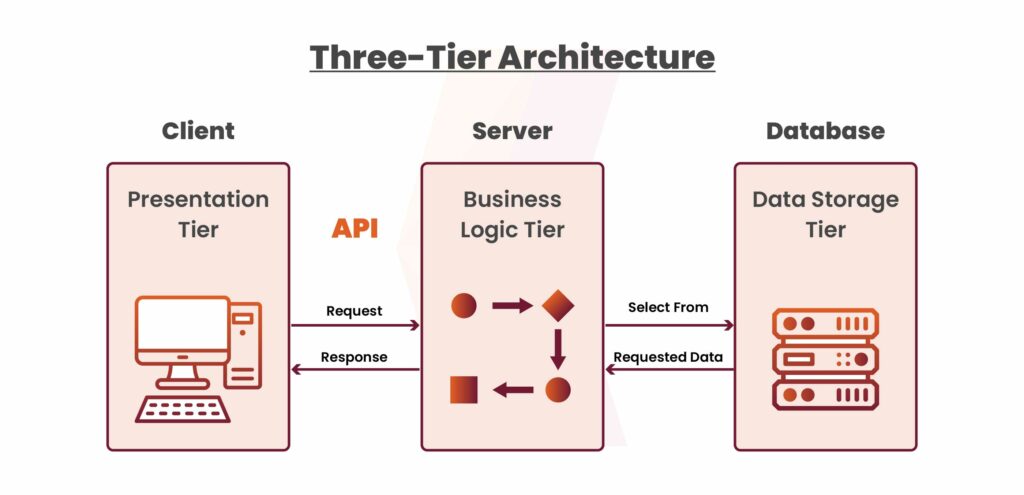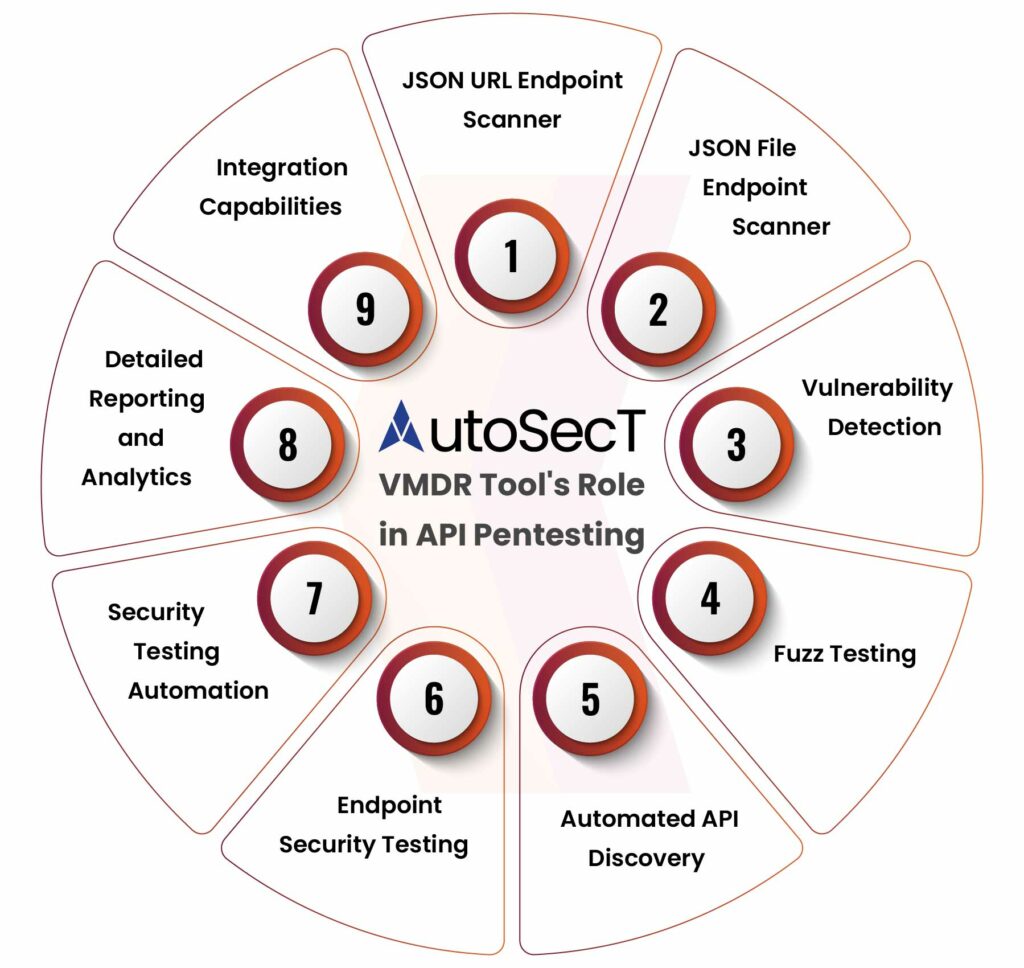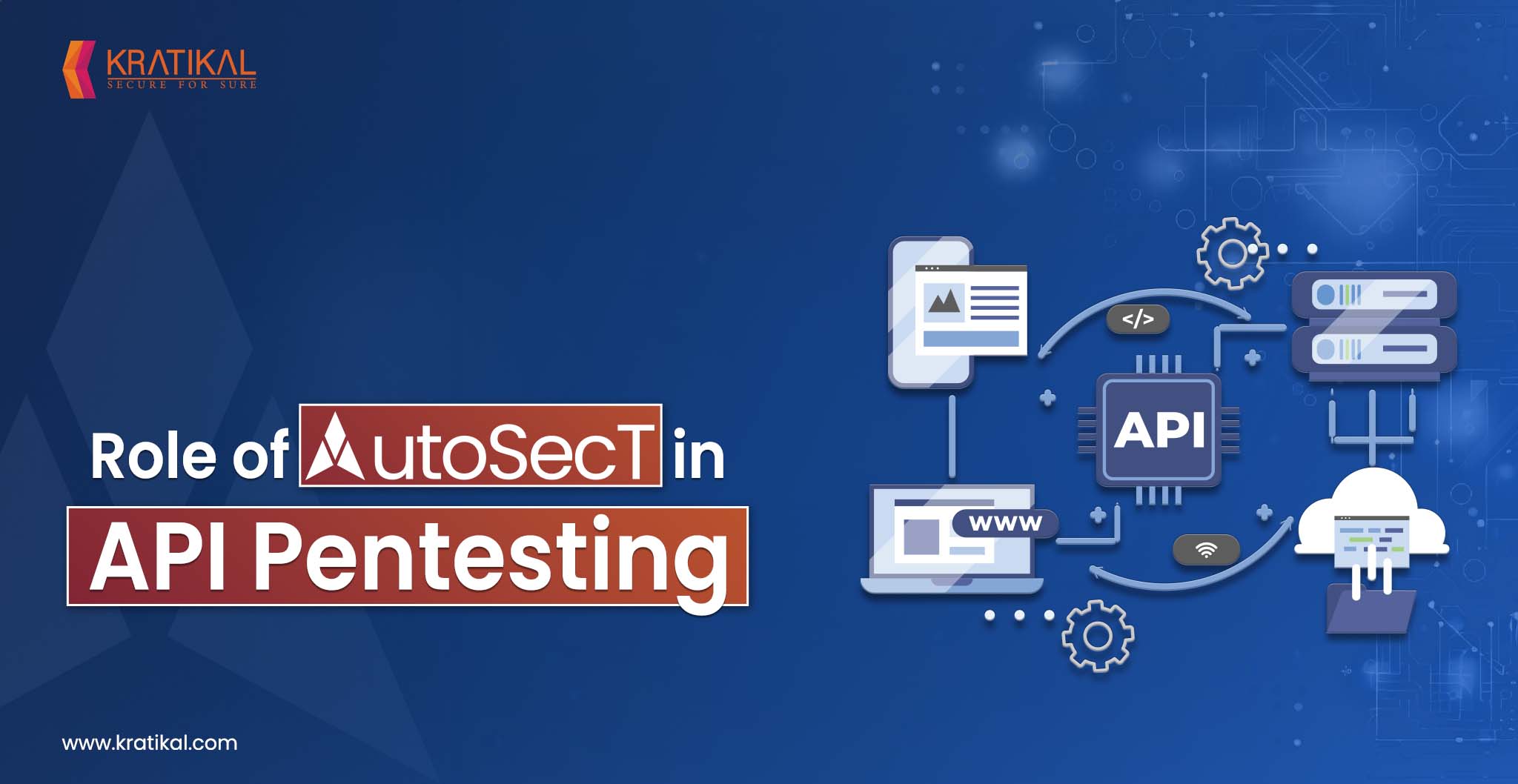APIs (Application Programming Interfaces) have become the backbone of modern software, enabling seamless communication between applications and services with efficiency and simplicity. As APIs play an increasingly vital role in today’s digital ecosystem, ensuring their security is more critical than ever. A key aspect of the Software Development Life Cycle (SDLC) is API Pentesting. This process identifies vulnerabilities within an organization’s API implementation, ensuring they are addressed before malicious actors can exploit them.
This blog aims to provide insights into how AutoSecT a pentest tool automates the testing process.
Table of Contents
What is API Pentesting?
API pentesting is a security assessment process that simulates real-world hacker attacks to identify vulnerabilities, misconfigurations, and design flaws in APIs. Security professionals test API endpoints, authentication mechanisms, data sanitization, rate-limiting, and resource utilization to uncover and mitigate risks before they can be exploited. Given the critical role of APIs in connecting systems and handling sensitive data, regular API pentesting helps organizations safeguard information, ensure compliance, and maintain trust. Unlike web application testing, API pentesting emphasizes backend services, token-based authentication, and structured data formats like JSON or XML, and often relies on automated tools for deeper endpoint discovery and analysis.

The most widely used software architecture for data transfer is REST, where clients send HTTP/HTTPS requests to the server. The server then fetches the required data from the database, processes it according to business logic, and sends it back to the client in formats such as JSON, XML, or others. The UI then presents this data to the user.
Another type of web API is SOAP, a legacy communication protocol still in use today. Unlike REST, SOAP is not limited to HTTP/HTTPS and supports other protocols such as TCP, SMTP, and FTP. However, SOAP exclusively works with the XML format. You can learn more about SOAP and its differences from REST in our detailed article.
AutoSecT’s Role in API Pentesting
AutoSecT enhances API penetration testing through its comprehensive Vulnerability Management, Detection, and Response (VMDR) features. Its role can be understood through the following key points:

- JSON URL Endpoint Scanner: It allows user to input a JSON URL, which is then scanned to retrieve all the API endpoints present within the JSON object. The system extracts, processes, and displays the relevant endpoint routes from the provided JSON data
- JSON File Endpoint Scanner: This feature allows the user to upload a JSON file, which is then scanned to retrieve all the API endpoints present within the JSON file. The system extracts, processes, and displays the relevant endpoint routes from the uploaded JSON data.
- Vulnerability Detection: Identifies common API vulnerabilities such as SQL Injection, Cross-Site Scripting (XSS), Broken Authentication, and more.Uses a combination of static and dynamic analysis to uncover potential security flaws.
- Fuzz Testing: Sends random and malformed data to API endpoints to identify vulnerabilities. Helps discover hidden issues that standard testing might miss.
- Automated API Discovery: Automatically discovers and inventories all API endpoints within your environment.
- Endpoint Security Testing: Evaluate the security of individual API endpoints. Ensures each endpoint is protected against specific threats.
- Security Testing Automation: Automates security testing processes to ensure thorough and consistent testing. Integrates with CI/CD pipelines for seamless testing during the development lifecycle.
- Detailed Reporting and Analytics: Generates comprehensive reports on vulnerabilities, security posture, and compliance status.Offers insights and recommendations for remediation and improving API security.
- Integration Capabilities: Integrates with popular development, security, and DevOps tools.
Why is API Pentesting Essential?
API’s facilitate communication and data exchange between software components, applications, and systems providing programmatic access to digital assets. This makes them a prime target for attackers seeking to exploit vulnerabilities for financial gain, data theft, or unauthorized system access.
Conducting API penetration testing allows organizations to identify and address vulnerabilities and flaws that automated tools may overlook. Given that APIs often handle critical business functions like payment processing or customer data management, successful attacks can lead to data breaches, operational disruptions, financial losses, and reputational harm. Incorporating API pen testing into a security program is essential to ensure APIs are robust and capable of resisting attacks from malicious actors.
Book Your Free Cybersecurity Consultation Today!
Benefits of API Pentesting
Identifying API-Specific Vulnerabilities
API penetration testing involves a comprehensive evaluation of endpoints, authentication methods, input validation, and authorization mechanisms. It identifies both common and API-specific vulnerabilities, including insecure endpoints, weak authentication practices such as vulnerable tokens or keys, and improper handling of sensitive data formats like JSON or XML.
Performing security tests on APIs is crucial for detecting and addressing vulnerabilities, providing robust defense against potential cyber threats.
Strengthen API Security
API penetration testing enhances overall security by identifying and addressing vulnerabilities. It ensures the API is resilient to emerging threats targeting sensitive data and API functions. Since APIs are directly integrated with applications, securing them is also critical for safeguarding the application’s overall security.
Mitigate Risks in API Communication
API penetration testing helps identify and mitigate risks related to API communication, such as unauthorized access, data breaches, and man-in-the-middle attacks. It enables organizations to protect sensitive data transmitted through APIs and ensures compliance with data protection regulations.
Get in!
Join our weekly newsletter and stay updated
How AutoSecT is Different From Other Tools?
AutoSecT stands out from other tools by offering a comprehensive approach to security testing. It performs API pentesting capabilities with testing across web, mobile, and cloud environments, providing a unified solution for diverse security needs. As a Vulnerability Management Detection and Response (VMDR) tool, AutoSecT not only identifies vulnerabilities but also supports their prioritization and remediation. This versatility makes it a robust choice for organizations looking to enhance their security posture across multiple platforms.
Conclusion
APIs are pivotal to modern applications, yet their complexity exposes them to a myriad of security risks. API penetration testing is an essential practice to identify and address vulnerabilities, ensuring APIs remain secure, resilient, and compliant with evolving security standards. Tools like AutoSecT streamline this process by automating endpoint discovery, vulnerability detection, and security testing, empowering organizations to safeguard sensitive data and maintain trust. By adopting robust API security practices and leveraging advanced tools, businesses can effectively mitigate risks, protect critical systems, and build a secure foundation for their digital ecosystems.
FAQs
- What vulnerabilities can AutoSecT detect during API testing?
AutoSecT identifies various vulnerabilities, including SQL Injection, Cross-Site Scripting (XSS), Broken Authentication, Insecure Direct Object References (IDOR), and others. It also ensures proper input validation and secure handling of sensitive data formats like JSON and XML.
- How does AutoSecT handle detailed reporting and analytics?
AutoSecT generates comprehensive reports that outline detected vulnerabilities, security posture, and compliance status. These reports include actionable recommendations for remediation, helping organizations strengthen their API security.
- What makes AutoSecT different from other penetration testing tools?
AutoSecT stands out by offering a comprehensive Vulnerability Management, Detection, and Response (VMDR) approach, combining API penetration testing with web, mobile, and cloud security. It not only identifies vulnerabilities but also helps prioritize and remediate them across various environments.
- What kind of reports does AutoSecT generate?
AutoSecT generates comprehensive reports that provide detailed insights into vulnerabilities and security posture. These reports include recommendations for remediation and improving overall API security.








Leave a comment
Your email address will not be published. Required fields are marked *